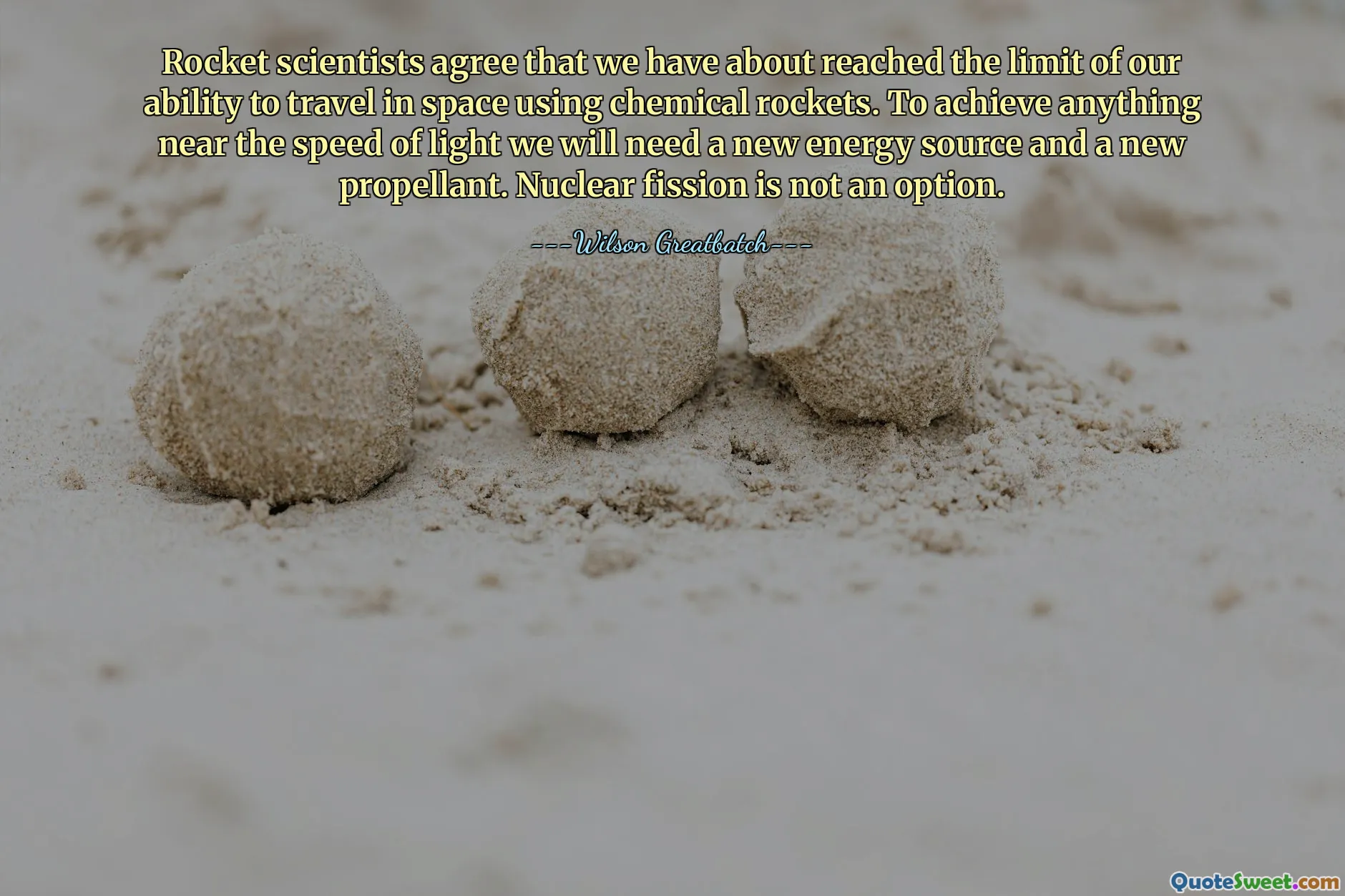
Rocket scientists agree that we have about reached the limit of our ability to travel in space using chemical rockets. To achieve anything near the speed of light we will need a new energy source and a new propellant. Nuclear fission is not an option.
The quote highlights the significant technological and scientific barriers we face in advancing space travel beyond current capabilities. Chemical rockets, which have served as the backbone of human space exploration so far, are fundamentally limited by the amount of energy they can produce relative to their mass. This makes achieving higher speeds, especially approaching the speed of light, an enormous challenge. To make meaningful progress toward such ambitious goals, fundamentally new propulsion technologies are required. The mention that nuclear fission is not an option suggests that even tried-and-true nuclear methods, which have been considered for propulsion, are dismissed perhaps due to safety, political, or technical concerns. This leaves the scientific community pondering alternative solutions such as nuclear fusion, antimatter propulsion, or breakthrough physics concepts like warp drives or wormholes—ideas that remain largely theoretical at this stage. The aspiration to reach the speed of light remains a profound challenge that touches on our understanding of physics and the limits imposed by nature. Investing in innovative energy sources and propulsion methods is crucial for future interstellar exploration. Overcoming these obstacles will not only require advances in engineering but also a deeper understanding of fundamental physics. This quote serves as a sober reminder that humanity’s journey into space may depend on revolutionary breakthroughs and persistent scientific endeavor, rather than incremental improvements on existing technologies.









